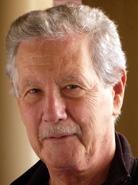Welcome!
I am Raphael David Levine, Raphy to my friends. All my life as a scientist I am interested in the description and quantification of change. On the bus as a first day graduate student I realized that it had to be a quantum mechanical description. Consider an H atom approaching an HD molecule. All isolated and at a given energy. The H atom can rebound and it can react to form H2 and it can react to form HD. At a higher total energy it can even break the HD bond leading to a three atoms final state, etc. The wave function has to be a superposition. With the encouragement and support of Charles Coulson I finally (1967) wrote it all as a book, Quantum Mechanics of Molecular Rate Processes, currently available from Dover Press. At that point Richard Bernstein requested to know how one can get concrete results. When this proved possible he asked how we would compare with the flood of experimental results that were just becoming available from molecular beams or from chemical lasers or from IR luminescence experiments. From information theory we leaned about axioms that enable introducing entropy and surprisal without the need to speak of a system in equilibrium. From quantum physics we took the notion of an elementary event, the equivalent in physics of a single toss of a coin. Thereby (1972) surprisal analysis was introduced, a method for compaction and dimension reduction of physicochemical data. The idea of a Lie algebra allowed the surprisal not only to analyze data but also to predict dynamics from a Hamiltonian. More recently big biological data sets were examined by surprisal analysis. The algebraic techniques were applied for multi electronic state dynamics and for teaching molecules to perform logic, up to using one quantum system to emulate the dynamics of another.

